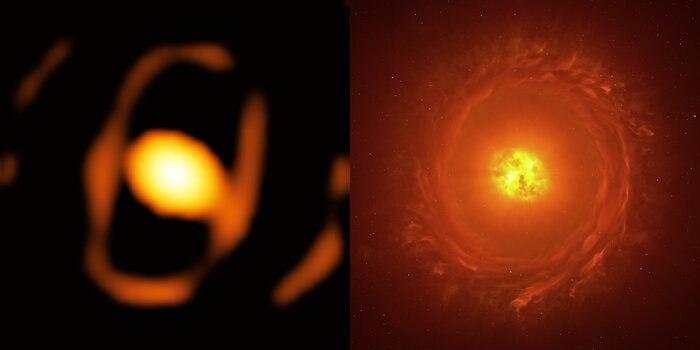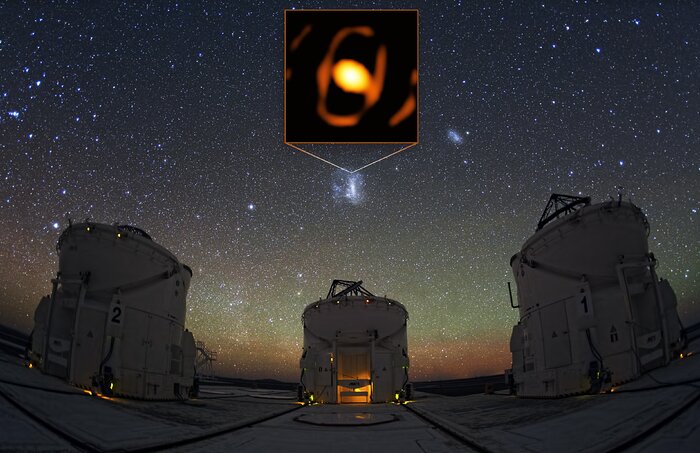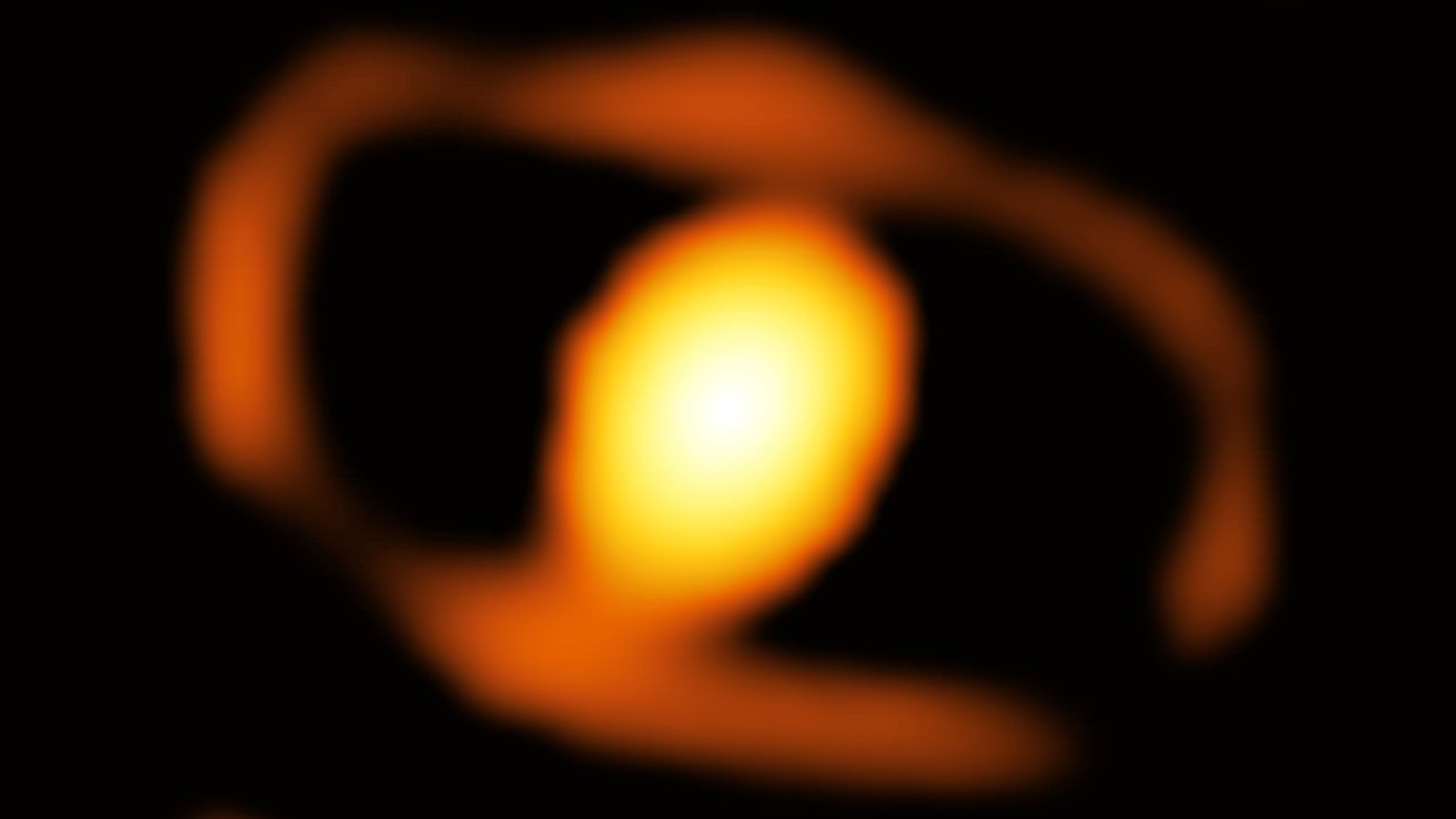Astronomers have captured a “zoomed-in” image of a star outside the Milky Way for the first time. The team brought the vast red supergiant star designated WOH G64 into focus using the Very Large Telescope Interferometer (VLTI).
WOH G64 is located a staggering 160,000 light-years away in the Large Magellanic Cloud (LMC), a satellite dwarf galaxy companion of the Milky Way. Astronomers have known of the existence of this star for some time, and it has earned the nickname the “behemoth star” because it is an incredible 2,000 times the size of the sun.
The VLTI was able to see this distant star in such detail that it also revealed its surrounding cocoon of gas and dust. These outflows of material indicate that WOH G64 is dying, in the final stages of its life leading up to a massive supernova explosion.
“For the first time, we have succeeded in taking a zoomed-in image of a dying star in a galaxy outside our own Milky Way,” team leader Keiichi Ohnaka, an astrophysicist from Universidad Andrés Bello, said in a statement. “We discovered an egg-shaped cocoon closely surrounding the star.
“We are excited because this may be related to the drastic ejection of material from the dying star before a supernova explosion.”
Beyond our galactic door
Astronomers have captured tens of “zoomed-in” images of stars within the Milky Way, but it has taken until now to capture a star beyond our galaxy with a similar level of detail. WOH G64 has been a target for Ohnaka and colleagues for some time, with the team studying it with the VLTI, located in the Atacama Desert of Northern Chile, in 2005 and 2007.
While these investigations have helped to unlock several characteristics of the behemoth star, catching an actual image of WOH G64 had to wait until the development of a second-generation VLTI instrument called “GRAVITY” that combines light from four VLT telescopes to image faint objects with great sensitivity.
Imaging WOH G64 with GRAVITY at last, Ohnaka and colleagues discovered that the star has been dimming over the past decade.
“We have found that the star has been experiencing a significant change in the last 10 years, providing us with a rare opportunity to witness a star’s life in real-time,” team member Gerd Weigelt, an astronomy professor at the Max Planck Institute for Radio Astronomy in Bonn, Germany said in the statement.
As they approach the final moments of their lives, the death throes of red supergiants like WOH G64 see them shed their outer layers of gas and dust in a process that can last thousands of years.
Team member and Keele Observatory Director Jacco van Loon has been observing the behemoth star for the last three decades: “This star is one of the most extreme of its kind, and any drastic change may bring it closer to an explosive end.”
WOH G64 is dimming because of the layers of stellar material it is shedding to create the egg-shaped envelope around it. The odd-shaped cocoon could also be the result of the gravitational influence of an undiscovered companion star close to WOH G64 tugging on it.
While this first zoomed-in image of WOH G64 is pretty cool, there may not be too many more to come. That’s because, as the behemoth star continues to belch out gas and dust, it will become dimmer and dimmer, making it more difficult to image.
Hopefully, updates to the VLTI, particularly the upcoming GRAVITY+ instrument, could facilitate future images of WOH G64 as it heads toward destruction.
“Similar follow-up observations with ESO instruments will be important for understanding what is going on in the star,” Ohnaka said.
The team’s research was published on Thursday (Nov. 21) in the journal Astronomy & Astrophysics.







